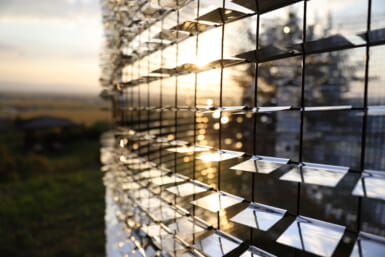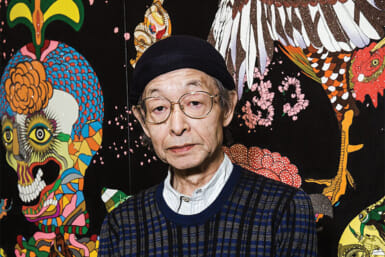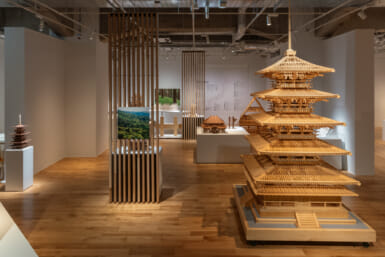by Owen Schaefer
“The Kaleidoscopic Eye” seems an unintentionally fitting title for the Mori Art Museum’s most recent exhibition. After all, the kaleidoscope can be an object that reflects and multiplies the outside world in its mirrors, but just as often obfuscates it with an ever-changing symmetry of colored baubles. It’s a delight to look at, but in the end something of a toy.
This is not to say that the works in The Kaleidoscopic Eye are purely eye candy. But the 23 artists involved in the show come from the Thyssen-Bornemisza Art Contemporary Collection, which does seem to favor the big, shiny crowd pleasers of contemporary art. While almost all the works are big on sensory impact, the assertion that they seek to have us question “what’s real,” as the show suggests, seems a somewhat colorful premise.
Hovering on the border between concept and visual impact is Carsten Höller’s work simply titled Y. The installation, a Y-shaped catwalk vaguely akin to something pulled from a fairground funhouse, uses mirrors and spinning lights to give those walking through it a sense of expanded space and endless corridors. Unfortunately, in the crowded Mori Art Museum, it’s more likely to induce a sense of annoyance with the narrow path. And in the end, Y raises more conceptual questions than sensory ones, and ends up feeling like a bit of a parlor trick.
Janet Cardiff’s installation, To Touch, also suffers in its crowded environment, but succeeds by drawing upon a clever sensory disconnect which unites touch, hearing, and in a roundabout way, memory. In a pitch-black room, a wooden workbench is the only visible object. And as viewers run their hands across the table’s surface the room responds with a variety of recorded noises, conversations, and media snippets. There are no visible sensors or buttons, and no way of telling which areas will trigger sounds—in fact, there is nothing to connect the cause and effect of touch and sound at all other than the physical experience of it. The result is haunting—as though touch alone could stir up long-forgotten conversations trapped within the wood. But when a dozen people paw at its surface at once,the effect is lost. Go early or on a weekday to get this one to yourself.
Wonderfully and almost literally kaleidoscopic, however, is Olafur Eliasson’s work, Your Welcome Reflected, which truly does call into question one of our most basic visual assumptions: color. Two translucent discs suspended on wires slowly turn, lit by a spotlight. Treated with a special optical coating, each disc seems to change color as it turns. And as they interact, it becomes difficult to discern between reflection and refraction, or to predict the colors that move and collide on the walls and the viewers themselves.
In fact, perhaps what this exhibition does best is offer collisions— collisions of works which to some extent inform one another. At the entrance, Tracey Emin’s neon handwriting leads you into a templelike space dominated by Cerith Wyn Evens’ equally electrical works. And in another area, Jeppe Hein’s reflective sphere rolls itself unpredictably across the equally shiny zigzags of Zobop, Jim Lambie’s floor installation, while a nearby room filled with mirror balls completes the glam ensemble.
There are certainly artworks here seeking to approach the sensory as an alternative to the cerebral. But their themes and concepts are as kaleidoscopic as their forms, and you’re more likely to leave the show questioning the reality of its thesis than your faith in your own senses. Still, it’s a show for the magpie in all of us.
Show: The Kaleidoscopic Eye: Thyssen-Bornemisza Art Contemporary Collection (to July 5) Gallery: Mori Art Museum (Roppongi station) Hours: 10am–10pm (Tuesday to 5pm) Admission: ¥1,500 Tel. 03-5777-8600 www.mori.art.museum








